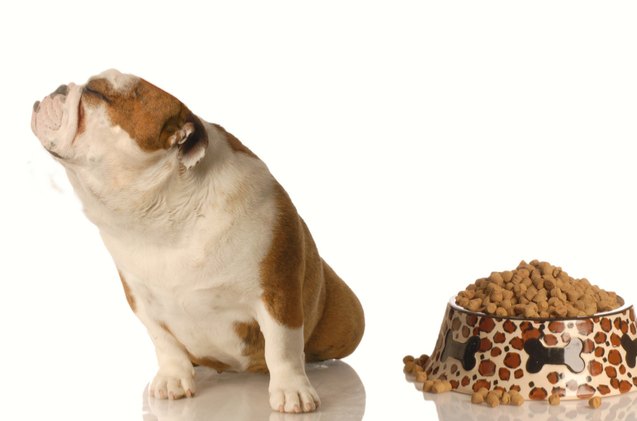The Shift Toward Human Foods in Our Pet’s Diet

When throwing together a salad for lunch I’ve been known to toss a forkful of my cats’ food into the mix for a little added protein. No, I haven’t resorted to chowing down on kibble croutons, but years ago I did stop feeding my feline crew, typical cat food – I switched them over to tinned tuna.
It started one evening when, after returning home to a clamor of hungry kitties looking for their dinner, I observed them sniff, then walk away from the mounds of commercial grade wet food that I had just loaded onto their waiting dishes. They never went back, and while I was scraping it into the garbage (cue sound of gagging), I began to wonder what they sensed about this smelly, pink-tinged pulp, that made them think they’d rather starve.
Because I have been a vegetarian for most of my life (no red meat or chicken), I felt a strange sympatico with my cat pack’s disdain for mystery meat and for a period of time, I tried making my own pet food (ever see a cat identify a grain of rice by texture and circulate it out the other side of his mouth while still eating?). But because it had an extraordinarily short shelf life, I seemed to be throwing out more than they were willing to eat.
Related: 5 Safe and Tasty Human Foods for Dogs
And in addition to it becoming expensive, I was worried they weren’t getting sufficient nutrition from the various on-line recipes that I was cooking up. That’s when tuna entered the picture. I had just opened a tin when I realized I had an engaged audience. A little sampling and a few purrs later, the solution was found. That was over 20 years ago, and today my cupboard is always stocked with water-packed, flaked tuna that is doled out between 4 cats and 2 dogs each morning. A healthy pinch is added to a top-grade kibble (to ensure nutritional needs are met) and I have pets that are actually excited about breakfast and don’t walk away from their bowls until they’re finished.
Apparently, I’m not the only pet-parent that feels the quality of commercial-grade food just isn’t good enough for his or her best buddy. With consumers shifting towards a lifestyle that includes more organic and GMO-free foods, they’re also changing how they feed their furry companions. Which explains why pet food purchasing patterns are rapidly shifting to include kibbles that are free from fillers, artificial colors and preservatives.
Related: Top 10 Spices and Herbs Your Dog Can Eat
And with millennials waiting longer to have children, they’re able to direct their need to nurture (and a hefty portion of their paycheck) into the care and well-being of their four-legged kid. In fact, the Economist cites a jump in pet food spend from $18 billion in 2009 to over $30 billion by 2017 – a number that far outpaces the increase in pet ownership.
But, while the “humanization” of our pets has made us willing to pay more for their upkeep, we aren’t buying into slick marketing and gimmicks. Just like our own food, we’re looking for real ingredients. In fact, we’re looking for the same ingredients we find in our own foods and this has resulted in a significant spike in pet foods that include superfoods such as cranberries, sweet potatoes, blueberries as well as fiber-rich carrots and beets. So much so that the holy grail of all things canine – the American Kennel Club – has recognized this desire to share our favorite foods by including a list of fruits and veggies suitable for Rover to nosh on such as apples, bananas, cucumber, broccoli and even pineapple.
And there’s more. According to global analytics guru Nielsen, those probiotics being flogged by yogurt brands to improve our gut-health, have now become a common ingredient in many pet foods with a triple-digit growth in product sales in just the past two years.
Related: What Does “Human Grade” Mean When It Comes to Dog Food?
This demand to feed our pets the same quality ingredients we’re consuming ourselves has led the Association of American Feed Control Officials (AAFCO) to introduce what they call “human grade” pet food. But before you pull out a spoon and settle in to share a meal with your pooch, know that this simply means that all ingredients were stored, handled, processed and transported in a manner consistent and compliant with the regulations used for human foods. In short, brands wanting to market a human-grade pet food must have produced the food in a plant or kitchen that has been licenced to do so. However, the bits and bobs that aren’t appealing for human consumption are still what goes into these pet foods.
If you truly want to know what goes into your pet’s daily diet, why not try making it yourself. Recipes have improved leaps and bounds over what I was trying to produce 20 years ago. If you’re stuck for inspiration, just check out our meal and snack recipes.

Sharing space with three seriously judgy Schnoodles and a feline who prefers to be left alone. #LivingMyBestLife
More by Mary Simpson























